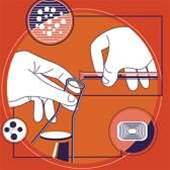
Currently rendering realistic computer generated images with smoke, fog, clouds or other 'participating media' (some of the light is actually absorbed or reflected by the material, thus the term 'participating') generally requires computational 'heavy lifting', lots of processor time, or both.
"Being able to accurately and efficiently simulate these kinds of scenes is very useful," said Jarosz.
With the boffins’ new approach, when smoke, clouds, fog or other participating media vary smoothly across a scene, the lighting is computed accurately at a small set of locations and then this information is used to interpolate the lighting at nearby points.
This approach, which is an extension of 'irradiance caching', cuts the number of computations along the line of sight that need to be done to render an image.


.png&h=140&w=231&c=1&s=0)





_(26).jpg&w=100&c=1&s=0)

 iTnews Executive Retreat - Security Leaders Edition
iTnews Executive Retreat - Security Leaders Edition












_(1).jpg&h=140&w=231&c=1&s=0)



